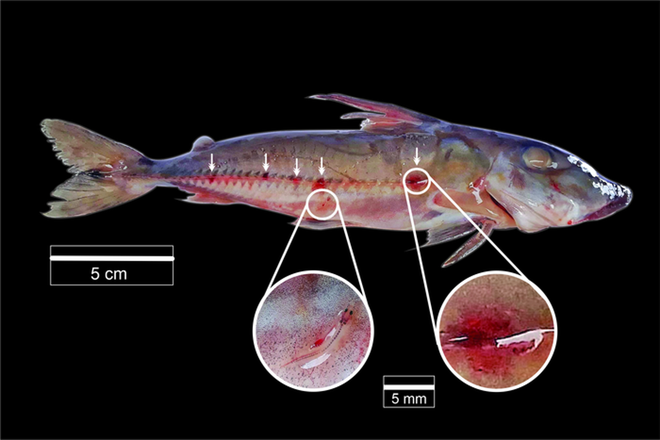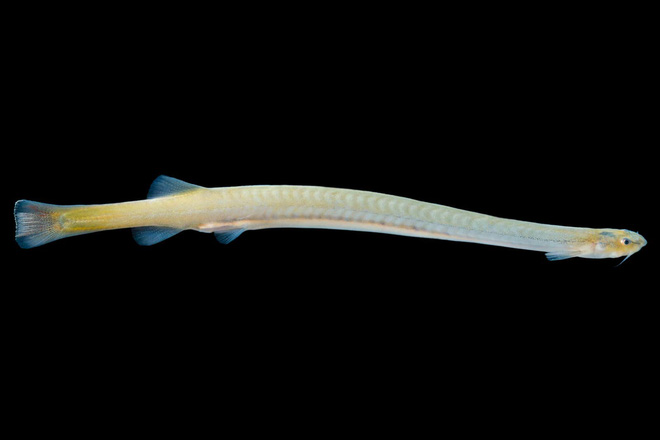Not only sucking blood, Candiru fish also uses the host’s body as a means of transportation or to hide from predators.

Candiru has the scientific name Vandellia Cirrhosa, is a genus of catfish but it is much smaller in size than Amazon catfish. Candiru’s body is almost transparent, about 5cm long and only as small as a toothpick, slender and very difficult to detect when in water.
With its extremely small size, the Candiru fish seems to be lost in the vastness of the Amazon as well as the huge number of creatures residing here. This fish has a very different way of survival: it is parasitic on the host fish and sucks blood to survive.
It is worth mentioning that this small fish can recognize prey based on the smell emitted in the water, then will approach and burrow into the gills of large fish. Candiru fish are very quick in using their fangs that grow upwards to stick straight into the host fish’s gills and suck blood. Therefore, it is also known as the “Brazilian vampire”.

Equally famous and terrifying are stories of Candiru fish being attracted to human urine in rivers, then swimming up their urethra. However, there is no evidence that Candiru likes to attack people’s “dangerous places”.
To date, there has been only one report considered evidence of Candiru fish invading the human body. It was in 1977 that a male patient in Manaus, Brazil was admitted to the hospital with a Candiru in his urethra. After many hours of surgery, doctors finally pulled the fish body out of the victim’s penis.
In April 2019, Chiara Lubich – a hydrologist at Amazonas Federal University in Manaus, Brazil and her colleagues were surveying and collecting fish species in a main tributary river of the Amazon when they discovered a fish. something strange stuck to the sides of the spiny catfish Doras phlyzakion.

Later, these parasites were identified as the Paracanthopoma genus of Candiru fish. The research team discovered a total of 9 spiny catfish and more than a dozen parasitic Candiru. The Candiru were taken into the laboratory to examine microscopically what was in their stomachs.
As a result, the researchers found nothing: No blood, skin, flesh or mucus. According to findings published in the journal Acta Ichthyologica et Piscatoria, Candiru fish do not eat anything on the host’s body but only follow like a fish that often clings to a shark.
Perhaps, the Candiru fish is exploiting its host’s size and swimming ability to move faster on the river. Besides, Candiru fish are almost transparent, so it is extremely easy to hide in the body of a larger fish so that predators cannot detect it.




